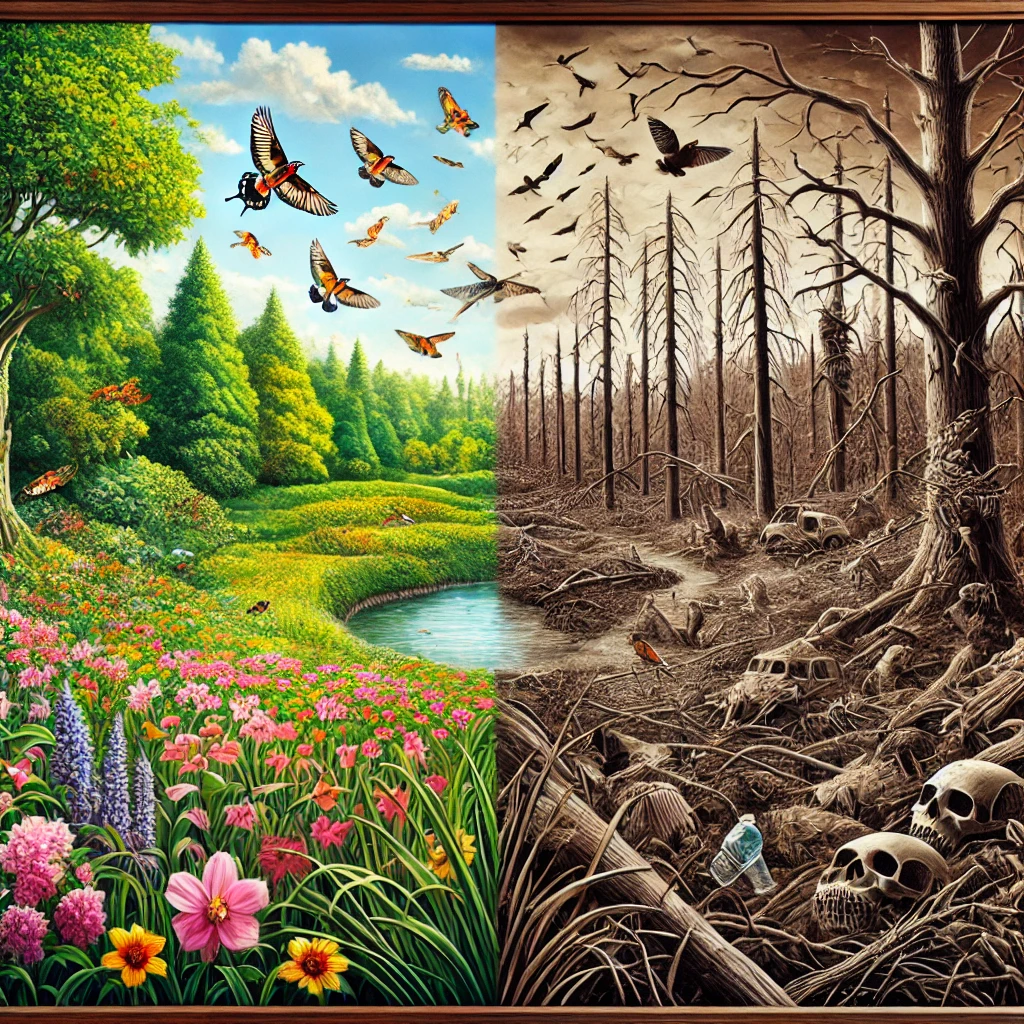On September 27, 1962, Rachel Carson’s groundbreaking book Silent Spring was published, marking a pivotal moment in the modern environmental movement. This seminal work brought to light the dangers of pesticide use and the broader implications of human actions on the environment. Carson’s eloquent writing and rigorous scientific research not only ignited public awareness but also catalyzed significant changes in policy and attitudes towards environmental protection.

The Context of Silent Spring
In the early 1960s, America was experiencing a post-war boom that emphasized industrial growth and agricultural advancement. Pesticides, particularly DDT (dichlorodiphenyltrichloroethane), were hailed as miraculous solutions to agricultural pests and disease-carrying insects. However, Carson, a marine biologist and writer, observed the detrimental effects of these chemicals on ecosystems and human health. She meticulously documented the harmful consequences of indiscriminate pesticide use, emphasizing that the chemical industry was operating with little oversight or accountability.
Carson’s background in science and her skillful narrative style allowed her to convey complex environmental issues to the general public. Her research was rooted in a deep understanding of ecology, and she emphasized the interconnectedness of all living things. This holistic approach laid the groundwork for a new way of thinking about human impact on the environment, challenging the prevailing mindset of the time.

The Impact of Silent Spring
Silent Spring quickly gained traction, becoming a bestseller and sparking widespread discussion about environmental issues. Carson’s vivid descriptions of the adverse effects of pesticides on birds, insects, and other wildlife resonated with readers and generated concern about the long-term consequences of chemical use. The book’s title itself became a powerful metaphor for the potential loss of natural beauty and biodiversity.
The publication of Silent Spring played a critical role in raising awareness about environmental issues and inspired a wave of activism. It galvanized grassroots movements and encouraged individuals to advocate for the protection of the environment. The book’s impact was felt across the country, leading to increased scrutiny of the chemical industry and prompting citizens to demand regulatory reforms.
Lasting Influence on Environmental Policy
The influence of Silent Spring extended beyond public awareness to policy changes. The book’s revelations contributed to the eventual banning of DDT in the United States in 1972, as well as the establishment of the Environmental Protection Agency (EPA) in 1970. Carson’s work helped to pave the way for stronger environmental regulations and greater accountability for chemical manufacturers.

Carson’s insights into the need for sustainable practices and responsible stewardship of the environment continue to shape environmental policy today. Her emphasis on the importance of biodiversity and ecosystem health resonates in contemporary discussions about climate change, conservation, and environmental justice.
A Legacy of Environmental Advocacy
Rachel Carson’s Silent Spring is widely regarded as a foundational text in the environmental movement, inspiring future generations of activists, scientists, and writers. The book’s impact is evident in the rise of environmental organizations, including Greenpeace and the Sierra Club, which have continued to advocate for the protection of the planet. Carson’s work encouraged a shift in public perception, prompting individuals to view environmental issues as vital concerns that affect everyone.
The themes explored in Silent Spring remain relevant today, as modern society grapples with pressing environmental challenges such as climate change, pollution, and habitat loss. Carson’s call for a more cautious and thoughtful approach to human interaction with nature resonates in contemporary sustainability efforts and conservation initiatives.
Continuing Relevance
The legacy of Silent Spring extends into various aspects of modern life, influencing everything from agricultural practices to public health policies. Carson’s advocacy for ecological balance and the protection of natural resources serves as a guiding principle for contemporary environmentalism. The book continues to be studied in classrooms and cited in discussions about environmental ethics and responsibility.The publication of Silent Spring on September 27, 1962, marked a watershed moment in the history of environmentalism. Rachel Carson’s eloquent critique of pesticide use and its consequences opened the door to a new era of awareness and advocacy. Her legacy endures in the ongoing fight for environmental justice and sustainability, reminding us of the importance of protecting our planet and the interconnectedness of all living beings. Through her work, Carson not only transformed the way we view our environment but also inspired a global movement that continues to strive for a healthier, more sustainable world.
